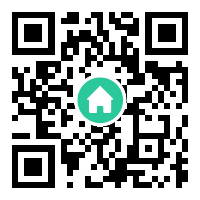Understanding Telegram Multiple Devices: A Seamless Communication Experience
Telegram multiple devices functionality has revolutionized how users interact with the platform, enabling seamless synchronization across smartphones, tablets, desktops, and even web browsers. Unlike many messaging apps that restrict users to a single active device, Telegram empowers its users to stay connected across multiple devices simultaneously. This feature not only enhances convenience but also reflects Telegram’s commitment to flexibility and user-centric design. Whether you’re switching between a work laptop and a personal phone or collaborating with teams on different devices, Telegram’s multi-device support ensures that your conversations, files, and settings remain in perfect harmony.
The Technical Backbone of Multi-Device Synchronization
Telegram’s ability to sync data across devices relies on its cloud-based architecture. All messages, media, and documents are stored securely in Telegram’s encrypted cloud, allowing instant access from any logged-in device. When you send a message from your phone, it is uploaded to the cloud and simultaneously pushed to all connected devices. This eliminates the need for device-to-device forwarding or manual backups. Moreover, Telegram’s unique approach to encryption ensures that end-to-end encrypted “Secret Chats” remain exclusive to the device they were initiated on, balancing security with the convenience of multi-device access for regular chats.
User Benefits: Productivity and Flexibility
For professionals and casual users alike, Telegram multiple devices support unlocks new levels of productivity. Imagine drafting a message on your desktop during a meeting and finalizing it on your phone while commuting. Students can take notes on a tablet and review them later on a laptop without missing a beat. Telegram also allows up to three active sessions on premium accounts, catering to users who juggle multiple workflows. Additionally, features like synchronized chat histories and real-time notifications across devices ensure that users never lose context, regardless of which device they pick up.
Security Considerations in a Multi-Device Ecosystem
While multi-device functionality offers convenience, security remains a priority. Telegram employs a combination of MTProto encryption for cloud chats and optional end-to-end encryption for sensitive conversations. Each device connected to an account has its own encryption keys, and users can review active sessions in the settings to revoke access to unrecognized devices. Furthermore, Telegram’s “Self-Destruct Timer” for messages adds an extra layer of privacy, automatically deleting sensitive content from all devices after a set period. These measures ensure that the convenience of multiple devices does not compromise user security.
Future Innovations and User Expectations
As technology evolves, Telegram continues to refine its multi-device capabilities. Recent updates introduced support for standalone smartwatches and IoT devices, hinting at a future where Telegram integrates with an even broader ecosystem. Users now expect features like cross-device file sharing and synchronized app settings to become more intuitive. With competitors racing to improve multi-device experiences, Telegram’s open-source ethos and focus on speed position it as a leader in redefining modern communication. The challenge lies in maintaining simplicity while expanding functionality—a balance Telegram has mastered thus far.

Conclusion: Redefining Connectivity in the Digital Age
Telegram multiple devices support is more than just a technical feature; it’s a paradigm shift in how we perceive digital communication. By breaking free from the limitations of single-device ecosystems, Telegram empowers users to interact with their digital lives on their own terms. As the platform continues to innovate, its multi-device framework will likely set new standards for seamless, secure, and flexible communication—proving that in a world of constant connectivity, the right tools can make all the difference.












